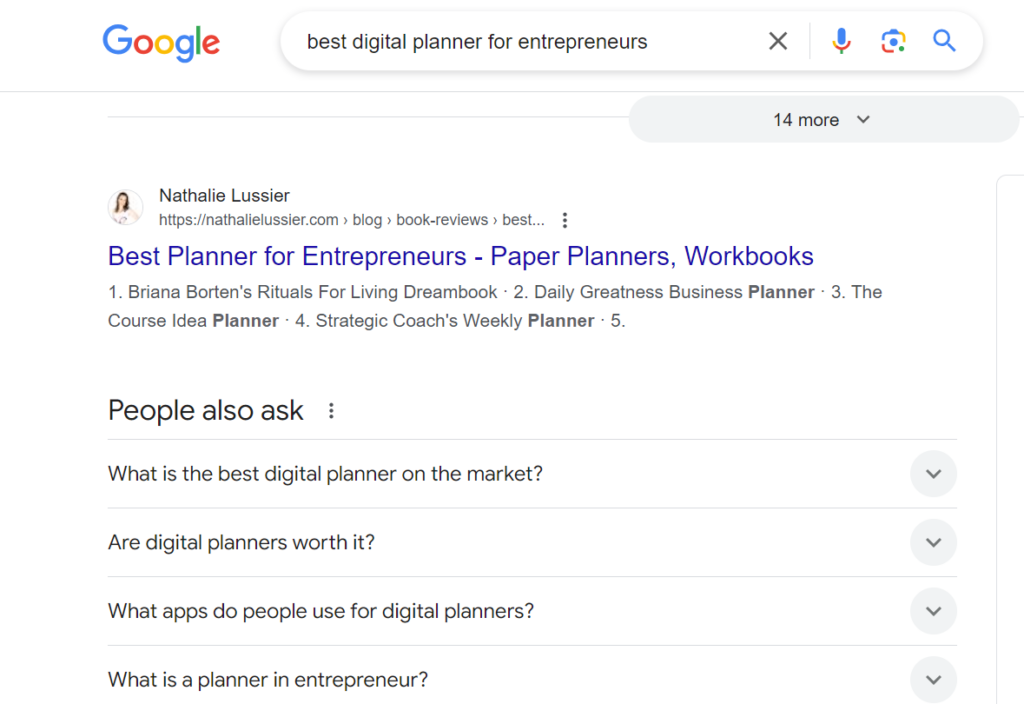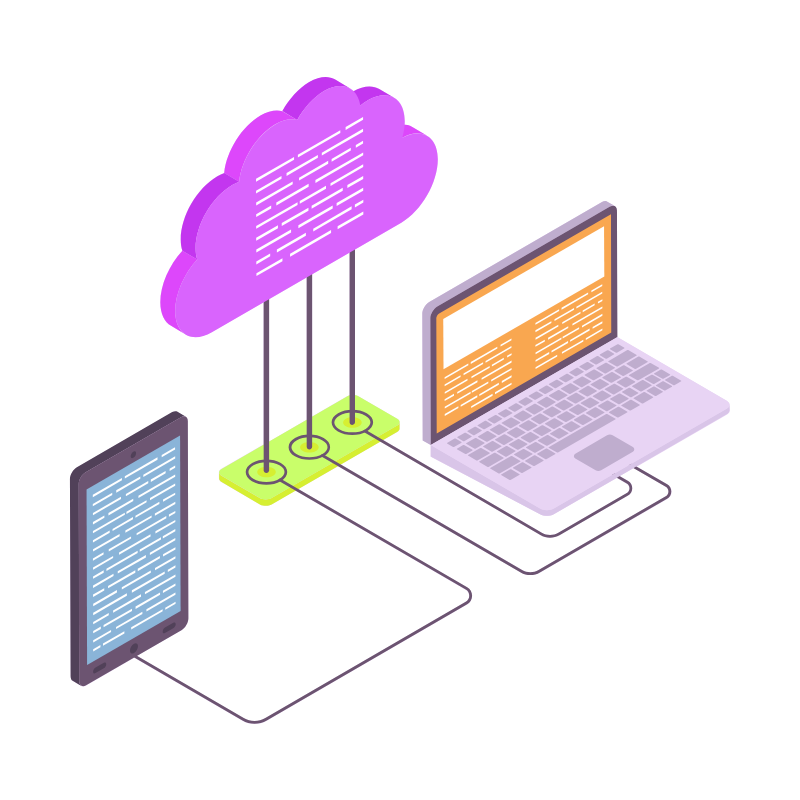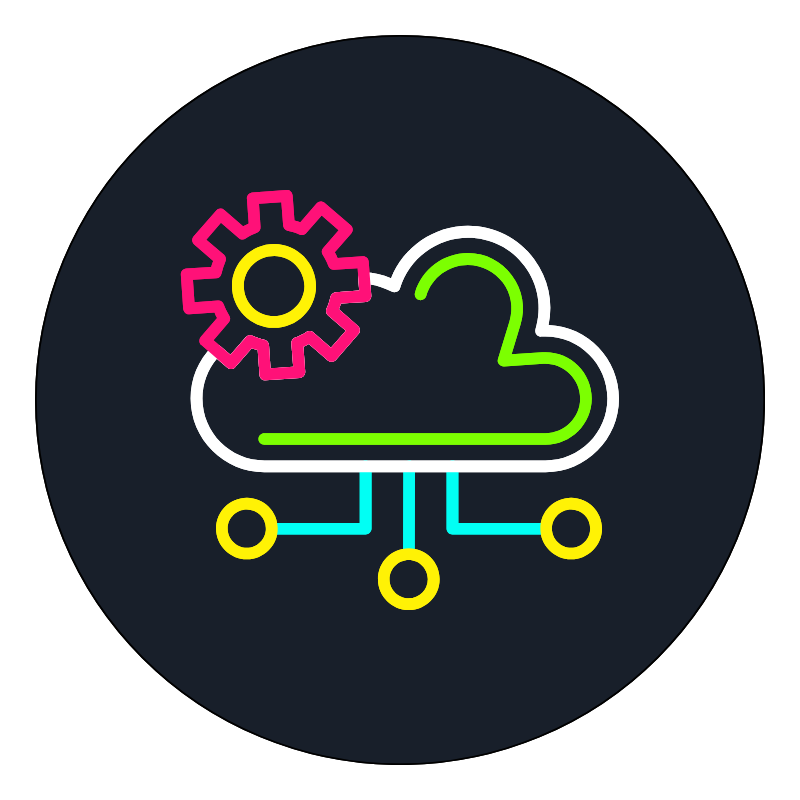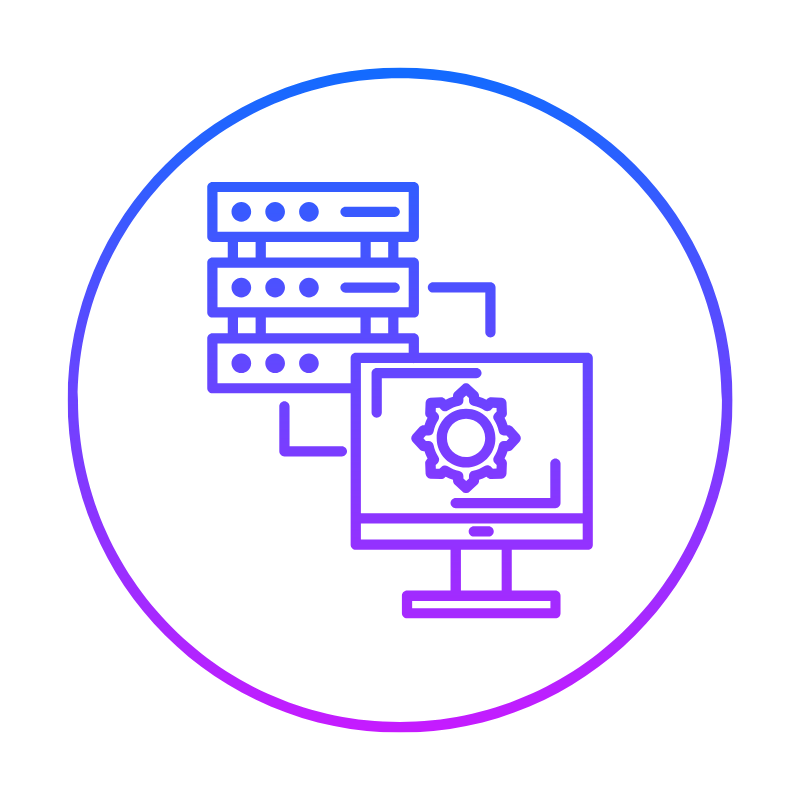If you’re reading this, you’re probably itching to start an online business in the Philippines.
Well, you’re in the right place.
Today, we’re going to explore 7 proven ways to sell digital products in the Philippines.
But first, let’s talk about why this matters.
The Philippines is experiencing a digital renaissance.
With over 86.98 million internet users and a booming e-commerce market, the opportunities are endless.
Whether you’re a graphic designer, a writer, a programmer, or just someone with a great idea, there’s never been a better time to sell digital products in the Philippines.
In this post, you’ll learn:
- The most effective platforms for selling your digital goods
- Strategies to reach and engage your target audience
- How to leverage social media and content marketing
- Tips for building a sustainable online business
So, are you ready to turn your digital creations into cold, hard cash?
Let’s dive in!
How I Picked These Strategies

Before we jump into our list of proven methods to sell digital products in the Philippines, let’s talk about how I put this list together.
First off, I didn’t just pull these ideas out of thin air.
Each method on this list has been:
- Tested by successful Filipino entrepreneurs
- Proven effective in the Philippine market
- Accessible to beginners and experts alike
I’ve also considered factors like:
- Initial investment required
- Potential for scalability
- Ease of implementation
Now, a quick disclaimer: while these methods are proven, your results may vary.
Success in selling digital products depends on various factors, including your niche, your product quality, and your marketing efforts.
Also, this list isn’t exhaustive.
The digital industry is constantly evolving, and new opportunities are always emerging.
But if you’re looking for a solid foundation to start selling your digital products, these seven methods will give you a running start.
Ready to explore? Let’s go!
1. E-commerce Platforms
When it comes to selling digital products in the Philippines, e-commerce platforms are your bread and butter.
They’re like the digital equivalent of setting up shop in a busy mall – except your potential customer base is the entire country (and sometimes beyond).
Let’s break it down:
The Big Players
Shopee
- Pros: Huge user base, easy to set up, built-in payment system
- Cons: High competition, fees can eat into profits
Read also: How to Sell on Shopee in the Philippines (5 Easy Steps)
Lazada
- Pros: Established brand, good for higher-priced items
- Cons: Stricter seller policies, can be overwhelming for beginners
Carousell
- Pros: Great for niche products, more personal interaction with buyers
- Cons: Less structured, may require more hands-on management
Here’s the thing: each platform has its own quirks and best practices.
For example, on Shopee, using their in-app games and promotions can boost your visibility.
On Lazada, investing in high-quality product images can make a big difference.
Why E-commerce Platforms Work
- Built-in Traffic: These platforms already have millions of users.
You don’t need to build an audience from scratch. - Trust Factor: Buyers feel more secure purchasing through established platforms.
- Infrastructure: Payment processing, dispute resolution, and even some marketing tools are provided.
Tips for Success
- Optimize Your Listings: Use relevant keywords in your product titles and descriptions.
Think about what your potential customers might search for. - Leverage Reviews: Encourage satisfied customers to leave positive reviews.
They’re gold for your credibility. - Use Promotions Wisely: Platforms often offer promotional tools.
Use them, but don’t cut your margins too thin. - Provide Stellar Customer Service: Quick responses and helpful attitudes can set you apart from the competition.
Remember, while e-commerce platforms are powerful, they’re also competitive.
To truly stand out, you’ll need to combine this method with others on our list.
Speaking of which, let’s talk about how social media can supercharge your digital product sales.
Read also: How To Start Selling Photos Online In The Philippines
2. Social Media Marketing
If e-commerce platforms are the storefronts of the digital world, social media is the bustling town square.
And in the Philippines, that square is always packed.
When it comes to selling digital products in the Philippines, social media isn’t just important – it’s essential.
Let’s break it down:
The Power Players
- With over 86.75 million users in the Philippines, it’s a goldmine.
- Facebook Groups and Marketplace are particularly effective for niche products.
- Perfect for visually appealing digital products like graphics or templates.
- Instagram Stories and Reels can showcase your products in action.
TikTok
- The rising star, especially for reaching younger audiences.
- Great for demonstrating how to use your digital products.
Why Social Media Works
- Direct Connection: You can interact with potential customers in real-time.
- Viral Potential: A single post can reach thousands if it resonates with your audience.
- Targeted Advertising: Social media platforms offer powerful tools to reach your ideal customers.
Strategies for Success
- Content is King: Don’t just sell. Provide value.
Share tips, insights, and behind-the-scenes looks at your creative process. - Consistency is Queen: Regular posting keeps you top-of-mind with your audience.
Use scheduling tools to maintain a consistent presence. - Engage, Engage, Engage: Respond to comments, ask questions, run polls.
The more you interact, the more your audience will grow. - Leverage User-Generated Content: Encourage customers to share their experiences with your products.
It’s like word-of-mouth marketing on steroids. - Collaborate with Influencers: Find micro-influencers in your niche.
Their endorsement can lend credibility to your products.
Here’s a pro tip: Each platform has its own “language.”
What works on Facebook might fall flat on TikTok.
Study successful creators in your niche on each platform.
What kind of content are they posting? How are they engaging with their audience?
Remember, social media is a long game.
Don’t expect overnight success.
Now, let’s talk about how to attract customers who are actively searching for products like yours.
That’s where content marketing and SEO come in.
3. Content Marketing and SEO

Imagine this: Someone in Manila is searching for “best digital planner for entrepreneurs.”
And boom! Your blog post pops up at the top of Google.
They read it, love your insights, and end up buying your digital planner.
That’s the power of content marketing and SEO when selling digital products in the Philippines.
Let’s dive in:
Why Content Marketing and SEO Matter
- Build Authority: Quality content positions you as an expert in your field.
- Attract Organic Traffic: SEO brings people actively searching for solutions you offer.
- Provide Value: Content marketing isn’t just about selling; it’s about helping your audience.
Content Marketing Strategies
- Blog Posts: Write in-depth articles related to your products.
For example, if you sell digital art brushes, write about digital art techniques. - Video Tutorials: Show how to use your products effectively.
YouTube is huge in the Philippines. - Podcasts: Discuss industry trends or interview experts in your field.
- Infographics: Filipinos love visual content. Create shareable infographics related to your niche.
SEO Tips for the Philippine Market
- Keyword Research: Use tools like Google Keyword Planner to find relevant Filipino search terms.
- Localize Your Content: Include references to Filipino culture or local examples where appropriate.
- Mobile Optimization: Most Filipinos access the internet via mobile. Ensure your content is mobile-friendly.
- Build Backlinks: Collaborate with other Filipino bloggers or businesses for guest posting opportunities.
- Use Schema Markup: This helps search engines understand your content better, potentially boosting your rankings.
Tools to Consider
- Yoast SEO: Great for on-page optimization if you’re using WordPress.
- Ahrefs: Powerful for keyword research and backlink analysis.
- Canva: Perfect for creating eye-catching infographics and social media images.
Remember, content marketing and SEO are marathon, not a sprint.
It takes time to see results, but the long-term benefits are huge.
You’re not just attracting customers; you’re building a loyal audience.
Pro Tip: Don’t just create content for the sake of it.
Always ask, “How does this help my audience?”
The more value you provide, the more likely people are to trust you and ultimately buy from you.
Now, let’s talk about how to nurture those relationships and turn one-time buyers into loyal customers.
Enter: Email Marketing.
4. Email Marketing
Picture this: You’ve got a direct line to your customers’ inboxes.
No algorithm to beat, no ad costs to worry about.
Just you, your message, and an interested audience.
That’s the beauty of email marketing when selling digital products in the Philippines.
Let’s break it down:
Why Email Marketing is a Game-Changer
- Direct Communication: Unlike social media, your message isn’t fighting for attention in a crowded feed.
- Higher Conversion Rates: Email marketing often outperforms social media in terms of sales conversions.
- Build Relationships: Regular emails help you stay top-of-mind with your audience.
- Cost-Effective: Once you’ve built your list, sending emails is virtually free.
Building Your Email List
- Offer a Lead Magnet: Create a free digital product (e.g., an ebook or template) in exchange for email addresses.
- Use Pop-ups Wisely: Exit-intent pop-ups can capture emails without annoying your visitors.
- Leverage Social Media: Promote your lead magnet on your social channels.
- Run Contests: Filipinos love contests. Run one that requires an email to enter.
Crafting Effective Email Campaigns
- Personalization: Use the subscriber’s name and tailor content based on their interests.
- Provide Value: Don’t just sell. Share tips, industry news, or exclusive content.
- Clear Call-to-Action: What do you want the reader to do? Make it obvious.
- Mobile Optimization: Most Filipinos check email on their phones. Ensure your emails look good on mobile.
- Timing Matters: Test different send times to see when your audience is most responsive.
Automation: Your Secret Weapon
Set up automated email sequences for:
- Welcome emails for new subscribers
- Abandoned cart reminders
- Post-purchase follow-ups
- Re-engagement campaigns for inactive subscribers
Tools to Consider
- MailChimp: User-friendly and great for beginners.
- ConvertKit: Powerful automation features, perfect for digital product sellers.
- Sendinblue: Offers both email marketing and SMS marketing tools.
Pro Tip: Segment your email list based on subscriber interests or behavior.
This allows you to send more targeted, relevant emails, which often leads to higher engagement and sales.
Remember, your email list is one of your most valuable assets.
Treat it with respect.
Don’t bombard subscribers with constant sales pitches.
Focus on providing value, and the sales will follow.
Now, let’s explore how you can expand your reach by partnering with others in your industry.
It’s time to talk about Affiliate Marketing.
5. Affiliate Marketing
Imagine having an army of salespeople promoting your digital products across the Philippines.
Now imagine you only pay them when they make a sale.
Sounds too good to be true? Welcome to the world of affiliate marketing.
When it comes to selling digital products in the Philippines, affiliate marketing can be a game-changer.
Let’s dive in:
What is Affiliate Marketing?
Simply put, it’s a performance-based marketing strategy where you reward partners (affiliates) for driving sales to your products.
Why Affiliate Marketing Works
- Extended Reach: Affiliates introduce your products to their audiences, expanding your visibility.
- Cost-Effective: You only pay when a sale is made.
- Trust Transfer: When respected affiliates recommend your product, their audience’s trust extends to you.
- Passive Income for Affiliates: This motivates them to promote your products consistently.
Setting Up an Affiliate Program
Choose Your Platform:
- Standalone solutions like Post Affiliate Pro
- Built-in options on platforms like Teachable or Gumroad
- Set Commission Rates: Be competitive but ensure profitability.
Digital products often allow for higher commission rates due to low production costs. - Create Promotional Materials: Provide affiliates with banners, email templates, and social media posts.
- Establish Clear Terms: Set rules about how affiliates can promote your products to maintain brand integrity.
Finding and Managing Affiliates
- Reach Out to Influencers: Look for Filipino bloggers, YouTubers, or social media personalities in your niche.
- Leverage Your Customer Base: Happy customers often make the best affiliates.
- Join Affiliate Networks: Platforms like Impact or ShareASale can connect you with potential affiliates.
- Provide Training: Help your affiliates succeed by teaching them effective promotion strategies.
- Regular Communication: Keep affiliates updated about new products, promotions, or changes to your program.
Best Practices
- Track Performance: Use analytics to identify your top-performing affiliates and learn from their strategies.
- Offer Tiered Commissions: Reward high-performing affiliates with increased commission rates.
- Run Special Promotions: Limited-time offers can motivate affiliates to push your products harder.
- Protect Against Fraud: Implement measures to prevent fake or incentivized sales.
Tools to Consider
- Affiliate WP: Great for WordPress users
- LeadDyno: Offers easy integration with major e-commerce platforms
- Refersion: Known for its user-friendly interface and robust tracking
Pro Tip: Don’t just focus on the big influencers.
Micro-influencers with smaller, highly engaged audiences can often drive more targeted traffic and sales.
Remember, successful affiliate marketing is about building relationships.
Treat your affiliates as partners, not just as a sales channel.
The more you invest in their success, the more successful your program will be.
Now, let’s explore a method that allows you to share your expertise directly with your audience: Online Courses and Webinars.
6. Online Courses and Webinars
Picture this: You’re sharing your knowledge with eager learners across the Philippines, all from the comfort of your home office.
And the best part? You’re getting paid for it.
Welcome to the world of online courses and webinars, a powerful way to sell digital products in the Philippines.
Let’s dive in:
Why Online Courses and Webinars Work
- High-Value Perception: Filipinos often view courses as investments in their future.
- Scalability: Create once, sell many times.
- Flexibility: Learners can access content at their convenience.
- Builds Authority: Positions you as an expert in your field.
Creating Your Course or Webinar
Choose Your Topic:
- Focus on your expertise
- Research in-demand skills in the Philippines (e.g., digital marketing, programming, English proficiency)
Structure Your Content:
- Break down complex topics into digestible modules
- Include a mix of video lessons, quizzes, and assignments
Production Quality:
- Invest in good audio and video equipment
- Consider hiring a graphic designer for professional-looking slides
Pilot Test:
- Run a beta version with a small group
- Gather feedback and refine your content
Platforms for Hosting
- Teachable: User-friendly, handles payments, good for beginners
- Thinkific: Robust features, allows for more customization
- Udemy: Large existing audience, but less control over pricing
- Zoom: Great for live webinars, can be combined with other platforms
Marketing Strategies
- Leverage Social Proof: Share success stories from your students
- Offer a Free Mini-Course: Give potential students a taste of your teaching style
- Run Webinars: Use free webinars to promote your paid courses
- Partner with Companies: Offer corporate training packages
- Use Email Marketing: Build a list of interested learners and nurture them
Pricing Strategies
- Tiered Pricing: Offer basic, standard, and premium versions
- Early Bird Discounts: Reward early adopters with special pricing
- Payment Plans: Make higher-priced courses more accessible
- Lifetime Access vs. Subscription: Choose based on your content and target audience
Engaging Your Students
- Create a Community: Use Facebook Groups or Discord for student interaction
- Regular Q&A Sessions: Host live sessions to address student questions
- Provide Certificates: Filipinos value certifications; offer completion certificates
- Update Content: Keep your course relevant with regular updates
Tools to Consider
- Camtasia: For screen recording and video editing
- Canva: For creating course graphics and presentations
- Kajabi: All-in-one platform for creating and marketing courses
Pro Tip: Don’t underestimate the power of Taglish (Tagalog-English mix) in your courses.
While English is widely understood, using some Tagalog can make your content more relatable to Filipino audiences.
Remember, the key to successful online courses is providing tangible value.
Focus on helping your students achieve real results, and word-of-mouth marketing will do much of the work for you.
Now, let’s explore how you can leverage your skills on a global scale through freelancing platforms.
Read also: How To Start Selling Paintings Online In The Philippines
7. Freelancing Platforms
Imagine turning your skills into a thriving business, serving clients from Manila to New York, all from your laptop.
That’s the power of freelancing platforms when it comes to selling digital products in the Philippines.
Let’s dive into how you can leverage these platforms:
The Freelancing Boom
The Philippines has become a hotspot for freelancers, with many Filipinos building successful careers on global platforms.
Top Platforms to Consider
Upwork
- Pros: Large client base, variety of projects
- Cons: High competition, fees can be steep for beginners
Fiverr
- Pros: Great for offering packaged services, easier to stand out
- Cons: Can be challenging to price higher-end services
Freelancer.com
- Pros: Popular in Asia, good for finding local clients
- Cons: Lots of low-budget projects
- Pros: Specifically for Filipino freelancers, less competition
- Cons: Smaller client base compared to global platforms
Turning Services into Digital Products
Productize Your Services:
- Create packages (e.g., “Website in a Week” for web developers)
- Offer tiered pricing (Basic, Standard, Premium)
Create Templates:
- Sell reusable templates alongside custom work
- Examples: Social media post templates, email marketing templates
Develop Micro-Services:
- Break down your skills into small, specific tasks
- Example: Logo critiques for designers
Standing Out in a Competitive Market
Niche Down:
- Specialize in a specific industry or skill
- Example: Instead of “graphic designer,” become “SaaS startup brand designer”
Showcase Your Portfolio:
- Create a stunning profile with your best work
- Include case studies showing the impact of your work
Leverage Reviews:
- Provide exceptional service to get glowing reviews
- Ask satisfied clients for detailed feedback
Price Strategically:
- Don’t compete on price alone
- Justify higher rates with quality and expertise
Offer Excellent Communication:
- Respond promptly to inquiries
- Provide clear updates throughout projects
Tools for Freelancers
- Trello: For project management
- Toggl: For time tracking
- Grammarly: For polishing your writing
- Canva: For creating quick graphics
Building Long-Term Success
Upsell and Cross-sell:
- Offer complementary services to existing clients
- Example: A web developer offering SEO services
Build a Personal Brand:
- Create content on LinkedIn or a personal blog
- Establish yourself as a thought leader in your niche
Network:
- Join Filipino freelancer groups on Facebook
- Attend virtual networking events in your industry
Continuous Learning:
- Stay updated with industry trends
- Invest in courses to expand your skill set
Pro Tip: Don’t shy away from your Filipino identity.
Many clients appreciate the strong work ethic and creativity associated with Filipino freelancers.
Use it as a unique selling point in your profile and pitches.
Remember, success on freelancing platforms is about more than just skills.
It’s about building relationships, delivering consistent quality, and constantly evolving your offerings.
Now, let’s compare all these methods side by side to help you choose the best approach for your digital products.
Comparing the Best Ways To Sell Digital Products in the Philippines
To help you decide which method(s) might work best for you when selling digital products in the Philippines, here’s a comparison table:
| Method | Initial Investment | Time Investment | Scalability | Learning Curve | Profit Potential |
|---|---|---|---|---|---|
| E-commerce Platforms | Low | Medium | High | Medium | High |
| Social Media Marketing | Low | High | Medium | Medium | Medium |
| Content Marketing & SEO | Low | High | High | High | High |
| Email Marketing | Low | Medium | High | Medium | High |
| Affiliate Marketing | Medium | Medium | High | Medium | High |
| Online Courses & Webinars | High | High | High | High | Very High |
| Freelancing Platforms | Low | High | Medium | Low | Medium |
Key Takeaways from the Table:
- E-commerce Platforms offer a good balance of investment and potential return.
- Social Media Marketing requires significant time but can be started with minimal financial investment.
- Content Marketing & SEO have a steep learning curve but offer high scalability and profit potential.
- Email Marketing provides excellent scalability and profit potential with moderate time investment.
- Affiliate Marketing can be highly profitable and scalable but requires some initial setup.
- Online Courses & Webinars have the highest profit potential but also require the most upfront investment.
- Freelancing Platforms offer a low barrier to entry but may have limited scalability compared to other methods.
Remember, the most effective strategy often involves combining multiple methods.
For example, you might sell courses on e-commerce platforms, promote them through social media and email marketing, and use content marketing to attract potential students.
In the next section, we’ll discuss how to choose the right method(s) for your specific digital products and business goals.
How to Choose the Right Method
Now that we’ve explored various ways to sell digital products in the Philippines, you might be wondering, “Which method is right for me?”
Factors to Consider
Your Product Type:
- Digital art? E-commerce platforms might be ideal.
- Online course? Look into dedicated course platforms.
- Software? Consider freelancing platforms or direct sales.
Your Target Audience:
- Young professionals? Focus on Instagram and LinkedIn.
- Business owners? LinkedIn and email marketing could be key.
- Gen Z? TikTok and Instagram are your best bets.
Your Skills and Resources:
- Tech-savvy? You might excel with SEO and content marketing.
- Great on camera? Webinars and video courses could be your strength.
- Limited time? Automated systems like email marketing might be crucial.
Your Budget:
- Tight budget? Start with social media marketing and free e-commerce platforms.
- More to invest? Consider paid ads or developing high-quality courses.
Your Goals:
- Quick sales? E-commerce platforms and social media can provide immediate results.
- Long-term authority? Content marketing and courses might be the way to go.
Matching Methods to Different Digital Products
E-books and Digital Downloads:
- E-commerce platforms
- Email marketing
- Social media marketing
Online Courses:
- Dedicated course platforms
- Webinars
- Email marketing
- Content marketing for lead generation
Software or Apps:
- Your own website
- Freelancing platforms (for custom solutions)
- Content marketing for SEO
- Affiliate marketing
Digital Art or Design Templates:
- E-commerce platforms
- Social media marketing (especially Instagram)
- Freelancing platforms
Membership Sites:
- Your own website
- Email marketing for retention
- Social media for community building
Start Small, Then Expand
- Begin with 1-2 Methods: Don’t try to do everything at once. Start with the methods that best match your skills and product.
- Test and Measure: Use analytics to see what’s working. Double down on successful strategies.
- Gradually Add New Channels: As you grow, experiment with new methods to reach a wider audience.
- Integrate Methods: For example, use social media to grow your email list, then use email marketing to promote your courses.
Adapt to the Philippine Market
- Mobile-First: Ensure all your digital products and marketing are mobile-friendly.
- Payment Options: Offer multiple payment methods, including GCash and bank transfers.
- Language: Consider using a mix of English and Tagalog (Taglish) in your marketing.
- Cultural Relevance: Incorporate Filipino cultural elements in your products and marketing when appropriate.
Remember, there’s no one-size-fits-all solution.
The best approach is often a combination of methods, tailored to your specific products, skills, and target audience.
Don’t be afraid to experiment and pivot based on your results.
Now, let’s recap the key points we’ve covered in this guide.
Summary of Key Takeaways
As we wrap up our journey through the world of selling digital products in the Philippines, let’s revisit the main points:
E-commerce Platforms:
- Leverage existing marketplaces like Shopee and Lazada
- Great for reaching a wide audience quickly
Social Media Marketing:
- Essential in the Philippines’ socially-connected culture
- Focus on Facebook, Instagram, and TikTok
Content Marketing and SEO:
- Build authority and attract organic traffic
- Tailor content to Filipino audiences and search habits
Email Marketing:
- Nurture relationships and drive repeat sales
- Personalization is key in the relationship-oriented Filipino market
Affiliate Marketing:
- Expand reach through partnerships
- Tap into the strong word-of-mouth culture in the Philippines
Online Courses and Webinars:
- Capitalize on the growing e-learning trend
- Offer practical skills valued in the Philippine job market
Freelancing Platforms:
- Showcase skills to a global audience
- Leverage the strong reputation of Filipino freelancers
Emerging Trends
- Mobile-First: With high smartphone penetration, mobile optimization is crucial
- Video Content: Growing popularity of TikTok and YouTube in the Philippines
- Digital Wallets: Increasing adoption of GCash and similar platforms
- Niche Markets: Opportunity in serving specific industries or interest groups
- Localization: Tailoring global products to Filipino tastes and needs
Key Strategies for Success
- Know Your Audience: Understand the unique needs and preferences of Filipino consumers
- Provide Value: Focus on solving real problems for your customers
- Build Relationships: Engage with your audience consistently across platforms
- Stay Agile: Be ready to adapt to new trends and technologies
- Leverage Your Strengths: Choose methods that align with your skills and resources
Remember, success in selling digital products in the Philippines often comes from a combination of methods.
Don’t be afraid to experiment and find what works best for your unique offerings.
Final Thoughts
We’ve looked at the best ways to sell digital products in the Philippines.
From e-commerce platforms to freelancing, each method offers unique opportunities to reach and engage Filipino consumers.
The Digital Gold Rush in the Philippines
The Philippines is in the midst of a digital revolution.
With a young, tech-savvy population and growing internet penetration, the opportunities for digital entrepreneurs are boundless.
Whether you’re a seasoned business owner or just starting out, there’s never been a better time to dive into the world of digital products.
Your Next Steps
- Identify Your Niche: What unique value can you offer to Filipino consumers?
- Choose Your Method(s): Based on your skills, resources, and goals, select 1-2 methods to start with.
- Create Your Product: Focus on quality and solving real problems for your target audience.
- Set Up Your Platform: Whether it’s an e-commerce store, a course website, or a freelancer profile, get your digital presence ready.
- Start Marketing: Begin with the channels where your audience is most active.
- Analyze and Adapt: Use analytics to understand what’s working and be ready to pivot as needed.
A Word of Encouragement
Remember, every successful digital entrepreneur started exactly where you are now.
The key is to take that first step and keep learning and adapting along the way.
The Filipino market is known for its warmth and openness to new ideas.
Embrace this spirit in your business, and you’ll find a receptive audience for your digital products.
Good luck, and happy selling!
Read also:
- How to Do SEO for an Online Store in the Philippines
- How to Market Your Online Business in the Philippines
FAQ Section
Do I need to be based in the Philippines to sell digital products there?
Not necessarily. While being familiar with the market helps, you can sell digital products to the Philippines from anywhere in the world. Just ensure you understand local preferences and regulations.
What types of digital products are most popular in the Philippines?
E-learning materials, digital art, mobile apps, and productivity tools are particularly popular. However, any product that solves a real problem for Filipino consumers has potential.
Is it necessary to price my products in Philippine Pesos?
While not strictly necessary, pricing in Pesos can make your products more accessible to Filipino consumers. Many e-commerce platforms allow you to display prices in multiple currencies.
How important is social media when selling digital products in the Philippines?
Very important. The Philippines is one of the world’s most active social media markets. Platforms like Facebook, Instagram, and TikTok are crucial for reaching and engaging Filipino consumers.
Are there any legal considerations I should be aware of when selling digital products in the Philippines
Yes, you should be aware of Philippine tax laws, data privacy regulations (like the Data Privacy Act of 2012), and intellectual property rights. It’s advisable to consult with a local legal expert for specific guidance.
How can I handle payments when selling to customers in the Philippines?
Popular payment methods include credit/debit cards, digital wallets like GCash and PayMaya, and bank transfers. E-commerce platforms often handle these transactions, but you may need to set up local payment options if selling independently.
Is it better to create my own website or use existing platforms to sell digital products?
Both approaches have merits. Existing platforms offer built-in traffic and infrastructure, while your own website gives you more control and helps build your brand. Many successful sellers use a combination of both.
How can I stand out in the competitive digital product market in the Philippines?
Focus on creating high-quality, unique products that solve specific problems for Filipino consumers. Build a strong brand, engage actively on social media, and provide excellent customer service.
Do I need to speak Tagalog to successfully sell digital products in the Philippines?
While not absolutely necessary (as English is widely spoken), using some Tagalog or Taglash (Tagalog-English mix) in your marketing can help you connect better with Filipino customers.
How quickly can I expect to see results when selling digital products in the Philippines?
This varies greatly depending on your product, marketing strategy, and market conditions. Some sellers see quick results, while others take months to gain traction. Focus on consistent effort and continual improvement rather than overnight success.
Are there any cultural considerations I should keep in mind when marketing to Filipino consumers?
Yes, Filipinos generally value family, relationships, and community. They also appreciate brands that show understanding of local culture and humor. Be respectful of local customs and holidays in your marketing efforts.
How important is mobile optimization for selling digital products in the Philippines?
Extremely important. The Philippines has one of the highest rates of mobile internet usage in the world. Ensure your products, website, and marketing materials are all optimized for mobile devices.
Can I use affiliate marketing to sell my digital products in the Philippines?
Absolutely. Affiliate marketing can be very effective in the Philippines, especially given the strong influence of word-of-mouth and social proof in Filipino culture.
How often should I update my digital products?
This depends on the nature of your product, but regular updates show your commitment to quality and can help maintain customer interest. For software or courses, aim to update at least quarterly. For other products, annual updates may be sufficient.
Is it worth investing in paid advertising to sell digital products in the Philippines?
Paid advertising, particularly on social media platforms, can be very effective in the Philippines. However, start with a small budget and carefully track your ROI before scaling up.
Remember, the key to success in selling digital products in the Philippines is understanding your target market, providing genuine value, and being willing to adapt your strategies based on feedback and results.
Don’t be afraid to experiment with different approaches to find what works best for your unique products and business model.
 Web HostingCost-effective shared hosting solutions
Web HostingCost-effective shared hosting solutions Reseller HostingStart your own hosting business without tech hustle
Reseller HostingStart your own hosting business without tech hustle Affiliate ProgramEarn commission by referring customers to our platforms
Affiliate ProgramEarn commission by referring customers to our platforms cPanel HostingHosting powered by cPanel (Mostly user friendly)
cPanel HostingHosting powered by cPanel (Mostly user friendly) Windows HostingOptimized for windows based-applications and sites
Windows HostingOptimized for windows based-applications and sites Domain SearchFind and register available domain names in seconds
Domain SearchFind and register available domain names in seconds All DomainsExplore and register domain extensions across the world
All DomainsExplore and register domain extensions across the world Domain Transfermove your domain to us with zero downtime and full control
Domain Transfermove your domain to us with zero downtime and full control Whois LookupLook up domain ownership, expiry dates and registrar information
Whois LookupLook up domain ownership, expiry dates and registrar information .com DomainSecure the most recognized domain for global credibility
.com DomainSecure the most recognized domain for global credibility VPS HostingScalable virtual servers. Full root access. Faster speed.
VPS HostingScalable virtual servers. Full root access. Faster speed. Managed VPSNot a tech expert? Choose our fully managed VPS server.
Managed VPSNot a tech expert? Choose our fully managed VPS server. Dedicated ServersGet the full power and complete control of your own physical server.
Dedicated ServersGet the full power and complete control of your own physical server.
